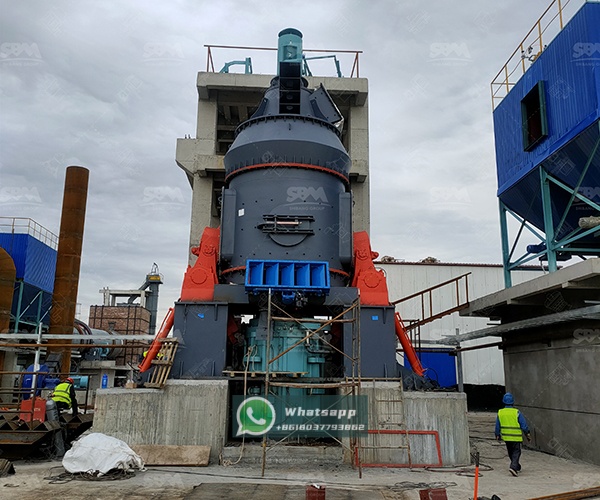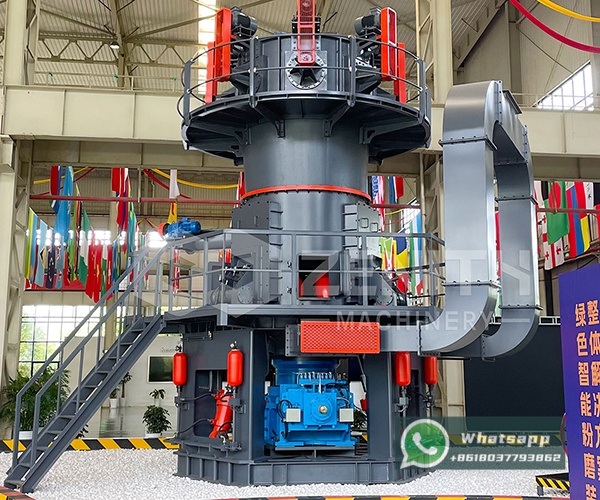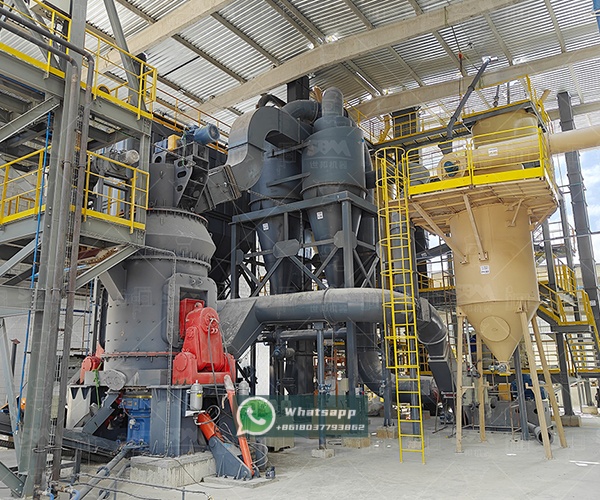In modern thermal power plants and cement manufacturing facilities, efficient handling and processing of coal mill rejects represent a significant operational challenge. These rejects, consisting of unburned carbon, ash, pyrites, and other non-combustible materials, accumulate during the coal grinding process and require specialized equipment for proper treatment and disposal. Vertical mill systems have emerged as the most effective solution for grinding and classifying coal mill rejects, offering superior efficiency, reduced energy consumption, and enhanced environmental performance compared to traditional ball mill systems.
Coal mill rejects typically comprise 5-15% of the total coal feed and present several operational challenges. Their abrasive nature causes excessive wear on conventional grinding equipment, while their variable composition makes consistent processing difficult. Traditional disposal methods often involve landfilling, which represents both an environmental concern and a waste of potentially valuable materials. With increasing environmental regulations and operational cost pressures, power plants are seeking more sustainable and economically viable solutions for reject management.

Vertical mill systems offer distinct advantages for processing coal mill rejects. Their integrated design combines multiple functions—crushing, grinding, drying, classification, and material transport—into a single compact unit. This integrated approach significantly reduces the footprint requirements while improving overall system efficiency. The vertical orientation of these mills facilitates better material flow and more efficient particle classification, resulting in more consistent product quality and reduced energy consumption per ton of processed material.
Modern vertical mills incorporate advanced grinding technology that minimizes wear on critical components, even when processing highly abrasive materials like coal mill rejects. The grinding mechanism in vertical mills creates a bed of material between the grinding rollers and the table, which reduces metal-to-metal contact and extends equipment lifespan. Additionally, the ability to control grinding pressure and table speed allows operators to optimize performance for specific reject compositions and desired output specifications.
The classification system represents a critical component in vertical mill systems for coal mill rejects. Advanced dynamic classifiers integrated into these systems enable precise control over particle size distribution, ensuring optimal separation of valuable carbonaceous material from inert ash components. This capability allows operators to recover usable fuel from the rejects stream while concentrating the inert materials for more efficient disposal or potential utilization in other applications.
Modern vertical mills feature high-efficiency classifiers with adjustable rotor speeds and blade configurations, enabling real-time adjustment of the cut point to accommodate variations in feed material characteristics. This flexibility is particularly valuable when processing coal mill rejects, which often exhibit significant compositional variations. The integrated classification system also reduces the need for external screening equipment, further simplifying the process flow and reducing overall system complexity.
Shanghai Zenith Machinery Co., Ltd., with its extensive experience in industrial powder grinding equipment, offers specialized vertical mill systems specifically designed for processing coal mill rejects. Among our comprehensive product portfolio, the LM Vertical Grinding Mill series stands out as an ideal solution for this challenging application.
The LM Vertical Grinding Mill integrates five essential functions—crushing, grinding, powder selection, drying, and material conveying—into a single, compact machine. This integrated approach makes it particularly well-suited for processing coal mill rejects, where space constraints and process efficiency are critical considerations. The mill’s robust construction and wear-resistant materials ensure reliable performance even when handling the abrasive nature of coal mill rejects.
| Model | Plate diameter (mm) | Capacity (t/h) | Max feed size (mm) | Main motor (kW) |
|---|---|---|---|---|
| LM130M | 1300 | 10-17 | <38 | 185 |
| LM220M | 2200 | 35-50 | <50 | 500 |
| LM280M | 2800 | 60-90 | <50 | 900 |
For facilities requiring ultra-fine processing of coal mill rejects or seeking to maximize the recovery of carbonaceous material, Zenith’s LUM Ultrafine Vertical Mill offers advanced capabilities. This mill integrates grinding, drying, classifying, and transportation functions while occupying minimal space. Its intelligent control system facilitates easier maintenance and optimization of operating parameters, making it particularly suitable for processing challenging materials like coal mill rejects.

The implementation of vertical mill systems for coal mill reject processing delivers significant operational and economic benefits. Energy consumption typically ranges 30-50% lower than traditional ball mill systems, resulting in substantial cost savings over the equipment lifecycle. The compact design reduces space requirements by approximately 50% compared to conventional systems, making vertical mills particularly advantageous for facilities with space constraints or those looking to retrofit existing operations.
Maintenance requirements for vertical mill systems are significantly reduced due to their simplified mechanical design and reduced number of moving parts. The ability to perform maintenance on individual components without complete system shutdown further enhances operational availability. When processing coal mill rejects, the wear-resistant materials used in critical components extend service intervals and reduce the frequency of replacement part requirements.
Vertical mill systems contribute to improved environmental performance in several ways. Their higher energy efficiency directly translates to reduced greenhouse gas emissions associated with power generation. The enclosed design minimizes dust emissions during processing, improving workplace safety and reducing environmental impact. Additionally, the efficient classification capabilities enable better separation of reusable materials from waste streams, supporting circular economy principles.
By recovering carbonaceous material from coal mill rejects, vertical mill systems help reduce the volume of material requiring disposal while simultaneously recovering valuable fuel resources. This approach aligns with waste minimization strategies and can contribute to reducing the overall environmental footprint of power generation operations. The ability to process rejects to consistent specifications also facilitates potential utilization of the processed material in other applications, such as construction materials or soil amendments.
Successful implementation of vertical mill systems for coal mill reject processing requires careful consideration of several factors. The specific characteristics of the rejects, including moisture content, abrasive properties, and chemical composition, should be thoroughly analyzed to ensure proper equipment selection and configuration. Feed system design must accommodate the potentially variable flow characteristics of coal mill rejects, while the classification system should be optimized for the desired separation efficiency.
Integration with existing material handling systems and compatibility with plant control architecture represent additional important considerations. Zenith’s technical team provides comprehensive support throughout the project lifecycle, from initial feasibility assessment through commissioning and ongoing operational optimization. Our extensive experience with similar applications ensures that each installation is tailored to the specific requirements of the facility and the characteristics of the coal mill rejects being processed.

The evolution of vertical mill technology continues to address the specific challenges of coal mill reject processing. Advancements in wear-resistant materials are extending component lifespan when processing highly abrasive materials. Improved classification systems with enhanced efficiency and flexibility are enabling more precise separation of valuable components from the reject stream. Integration of advanced process control and optimization algorithms is further enhancing system performance and operational efficiency.
Looking forward, we anticipate continued refinement of vertical mill systems specifically optimized for coal mill reject applications. These developments will likely focus on further reducing energy consumption, enhancing material recovery rates, and improving operational reliability. As environmental regulations continue to evolve and operational cost pressures increase, the role of advanced vertical mill systems in sustainable reject management will become increasingly important.
Vertical mill systems represent the state-of-the-art solution for grinding and classifying coal mill rejects, offering significant advantages in efficiency, operational cost, and environmental performance. Shanghai Zenith Machinery’s LM Vertical Grinding Mill and LUM Ultrafine Vertical Mill provide robust, reliable solutions specifically engineered for this challenging application. With their integrated design, advanced classification capabilities, and proven performance in demanding industrial environments, these systems enable power plants and industrial facilities to transform coal mill rejects from a disposal challenge into a managed resource stream.
The comprehensive technical support and application expertise provided by Zenith ensure successful implementation and optimal performance of vertical mill systems for coal mill reject processing. As industry continues to prioritize operational efficiency and environmental responsibility, these advanced grinding systems will play an increasingly vital role in sustainable industrial operations.